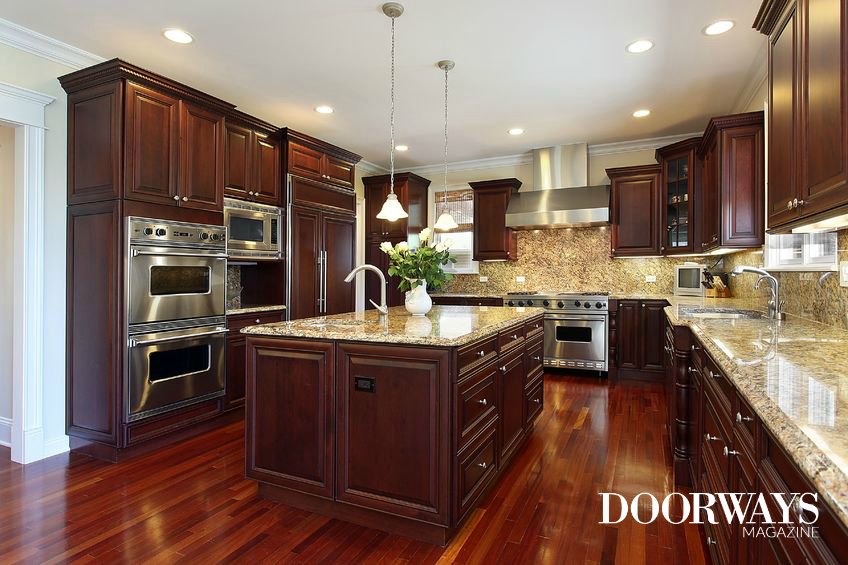Wed, Nov 21, 2018
Article may contain affiliate links. As an Amazon Associate I earn from qualifying purchases.

If you’ve decided to install new hardwood floors by yourself, know that you aren’t trying to accomplish the impossible.
With some simple instructions and a list of the frequent pitfalls homeowners frequently encounter, you’ll find the whole process is really rather simple and straightforward.
Does it take an expert to do it right? No. A beginner is perfectly suited for the task as long as instructions are followed carefully. Make sure to block out a whole day for the installation. Weekends are prime time for a job like this.
Here’s a list of tools and materials you’ll need:
Flooring Materials
| Hardwood flooring | Vapor barrier paper | Wood putty | Nails |
Power Tools
| Pneumatic Flooring Nailer | Chop saw | Table saw | Variable speed drill |
Basic Tools
| Hammer | Pry bar | Staple gun | Drill bits |
| Tape measure | Ear protection | Safety goggles | Chalk line |
If you’ve measured the room and bought the wood, the next matter of business is checking for moisture. The flooring must be acclimated to the room’s humidity and temperature according to the manufacturer’s guidelines.
Moisture is a big cause for problems later on, so you want to be sure that the temperature in the house and the relative humidity are at normal levels.
(If you’re uncertain about this, contact the store where you bought the hardwood for more insight.)
Next, make sure the subfloor is level and clean. If you have an uneven surface, research the various ways you can correct the flaw.
Now it’s time to roll out the strips of vapor barrier paper. The paper should overlap by at least 4” and then be stapled to the subfloor. Take a pencil and mark the baseboards where any joists are located.
Begin installation by choosing the straightest plank for the first row. Arrange the planks with the tongue side facing the center of the room.
Be sure to place spacers inside the expansion gap (the space between the wall and the floor). This will allow the wood to expand in hot and humid conditions.
With your drill, drill nail holes ¼ inch from the narrow side of the plank at ½ inch from the wall. Continue every 6 inches for the length of each plank. You’ll want to snap a chalk line 3/8” from the baseboard to allow for expansion.
Nail the few first boards in place by hand. Countersink the nails with a nail punch and fill the hole with matching putty. Then blind-nail at a 45-degree angle through the tongue, making sure to countersink the nail.
For the second row, connect and lock the tongue and groove, tapping them together with a mallet for a tight fit. You’ll want to stagger the ends six inches between adjoining boards to create a stronger and more attractive floor. Cut the end board if needed.
For the second row, you will have to blind nail through the tongue until you can use the flooring nailer. Since the flooring nailer requires more room to be handled, it will take two to four rows before it can be used. That means that when you get to the last rows, you’ll have to switch back to nailing by hand.
The last row may require you to cut the boards to fit, measuring the distance from the wall to the board, making room for the expansion gap. If the piece is less than an inch, you may have to apply a small amount of glue to the tongue and grove and insert it with a pry bar. Otherwise, face nail the piece, countersink and fill the whole with putty.
Your last step is to install any transition pieces and remove the spacers. Reattach shoe moldings and baseboards to the wall, and not the floor.
Maintenance for a pre-finished hardwood floor is easy. Make sure to keep the floor clean of grit and use a wood floor cleaning kit regularly.
READ NEXT
